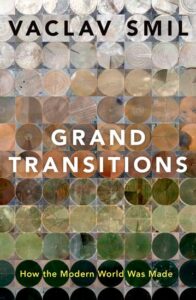 While unified global theories of everything are often problematic, particularly when humans are involved, there is still some reason to give cautious consideration to commonalities across national boundaries as well as over extended periods of time. Of course, it is all-too-easy to fall into teleological errors when assessing changes in societies, yet when care is taken to focus on the causes rather than the purposes for the observed results, asking such questions as “What makes the modern world work?” are entirely reasonable.
While unified global theories of everything are often problematic, particularly when humans are involved, there is still some reason to give cautious consideration to commonalities across national boundaries as well as over extended periods of time. Of course, it is all-too-easy to fall into teleological errors when assessing changes in societies, yet when care is taken to focus on the causes rather than the purposes for the observed results, asking such questions as “What makes the modern world work?” are entirely reasonable.
In his new book Grand Transitions; How the Modern World Was Made, Prof. Vaclav Smil examines the “four ‘grand transitions’ of civilization – in populations, agriculture, energy, and economics – which have transformed the way we live” as well as the world in which we do so. A scholar of international repute for his interdisciplinary research in the fields of energy, environmental and population change, food production, history of technical innovation, risk assessment, and public policy, Prof. Smil explores the interwoven histories, causes, and effects of the four grand transitions in order to explain how the way in which we experience and manage “the fifth transition – environmental changes from natural-resource depletion, biodiversity loss, and global warming – will determine the success or eventual failure” of all that has been done thus far.
It’s a challenging proposition for any scholar to investigate a question so vast in scope, however given his previous work over the many decades his career has spanned, his dozens of books and hundreds of papers crossing disciplines as necessary to find the most comprehensive answers to the questions posed, Prof. Smil is certainly one of the few scholars who would be thought sufficiently prepared to undertake so grand an enquiry, and I am very much looking forward to learning what he has to tell us all about his discoveries.
Available from:

